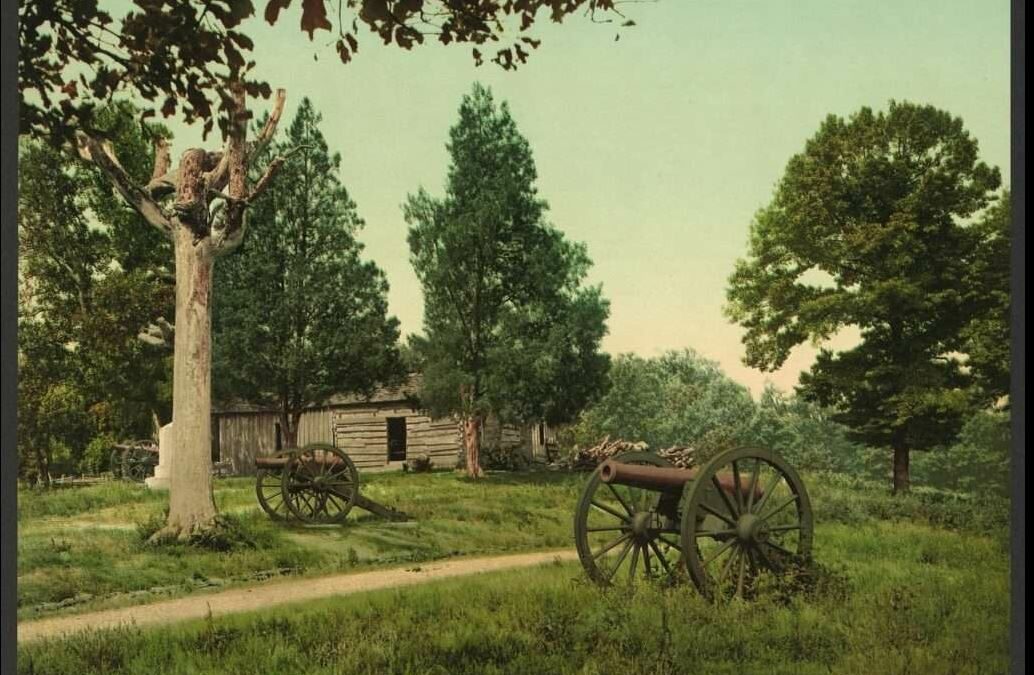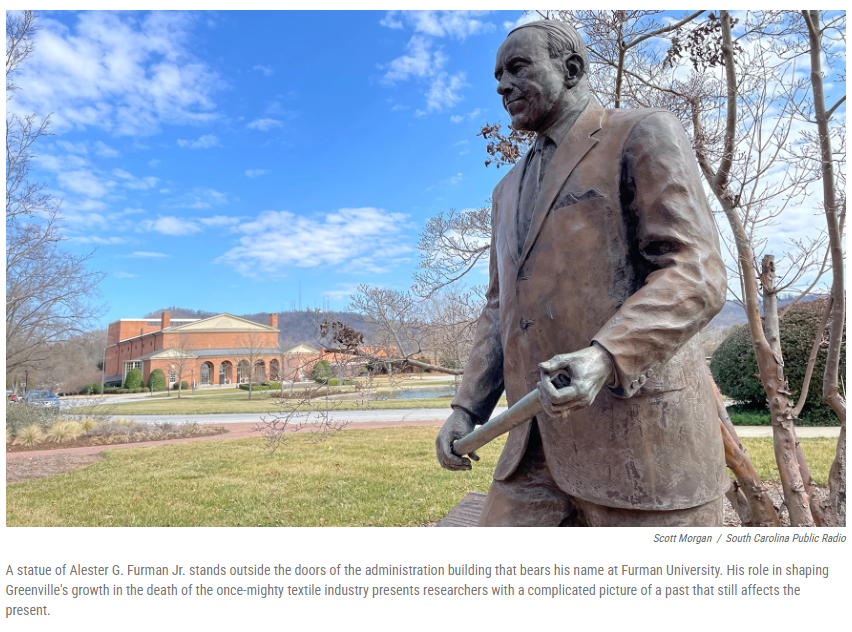As Gen. Braxton Bragg’s command camped near Bridgeport, Alabama, a hairy monster lurked near their positions. Five pickets from Capt. George Anderson’s company went missing over four days, each leaving signs of a struggle with some unseen foe. Anderson led a party of ten men to find the culprit, and they discovered a six-foot, 250-pound “Wildman” covered in hair. It took all ten to subdue it, but they could not extract any information, as the creature’s vocalizations were unintelligible. Anderson freed the Wildman, then stealthily followed. The creature halted at a large mountain cave before noticing the chase, at which time it bolted for the summit, hurling large rocks at its pursuers. Preferring not to be captured again, the Wildman leapt off the crest and plummeted to its death 100 feet below.[1]
The small band found the five missing pickets unharmed in the cave. After speaking to a local, Anderson discovered that the Wildman was formally known as Bill Patton. Patton was a Unionist and recluse who was captured by home guards wishing to take him to a recruiting station. In a fight to escape, he suffered a saber slash to his head that caused his madness, and he left for the wilderness. This episode, recounted by Anderson in an 1890 newspaper article, is the sole source for this strange encounter, perhaps the only one of its kind during the war.[2]

A fixture of folklore across the continent, the Wildman was the romanticization of the frontier personified: a man who left society behind and lived independently in the bush. Over time, this separation morphs him to appear like, or sometimes become, a monster. This latter half serves a cautionary purpose. Man needs civilization, which separates him from the beast—the untapped frontier beckons no longer to the individual explorer, but to American advancement.[3]
Analysis of this trope aside, the above paragraphs reveal two things about cryptids. Historical sightings of them are incredibly rare, and their typology, mannerisms, habitats, and other characteristics tell us just as much about ourselves as about these unidentified beings.
Cryptozoology is the study of hidden animals, those that have been sighted, but have not been confirmed and cataloged. It also includes potential instances of presumed extinct animals surviving longer than previously thought and known animals living in unexpected locations.[4] Generally, the term excludes phenomena of supernatural or otherworldly origins. Among the most famous cryptids are fantastical specimens such as Bigfoot and the Loch Ness Monster, but those who research with healthy skepticism focus on the more mundane.
As futile as cryptozoology may appear in the modern age, researchers have discovered and found convincing evidence of hidden animals. The saola, a species that looks like an antelope and lives along the Vietnam-Laos Border, only became known to science in 1993.[5] Longtime reports of big cats in the British countryside were bolstered by an analysis of a DNA sample taken from a dead sheep this past May. There was “no doubt” the sample was from a big cat, likely a leopard.[6] However, the existence of an individual, perhaps an escaped exotic pet, is far from confirmation of a stable breeding population.

In my boyhood, stories and descriptions of cryptids fascinated me. I sought books with fantastical illustrations, each revealing additional insight and sightings of the subjects. In time, I learned there were two types of cryptid publications: those that propagated unverifiable tales, and those that took a more grounded, evidence-based approach. The problem with cryptozoology is that the evidence is, by its nature, lacking. Less meticulous or dishonest authors pull their retellings from earlier prints with little to no examination of the primary source if one exists. Are there any genuine cryptid accounts from the Civil War?
The White River Monster allegedly inhabits its namesake waterway around Newport, Arkansas, with its first local sighting dated to 1915.[7] Alternative explanations include large snapping turtles, alligators, or alligator gars, although some defining characteristics are absent from these animals. One biologist believes it could be a wayward elephant seal, a species that can reach twenty-two feet.[8]
Local legend tells of the creature sinking a riverboat during the Civil War, a tale perhaps invented or popularized by folk singer and member of the Arkansas Parks and Tourism Commission Jimmy Driftwood during the 1970s.[9] Variations of the story state the ship may have been carrying gold or supplies or was a Confederate gunboat.[10][11] As one might expect, although vessels sank in the White River during the Civil War, there is no reference to such a monster in the Official Records or in any account researchers have uncovered.
A Bigfoot account may originate from Pvt. James Moore of the 67th Pennsylvania, writing from Harper’s Ferry on Feb 26, 1863. Pieces of the letter written to his wife include, “…Ramsey and myself were charged to guard Company accoutrements along the railway. Very cold still night…the boys started raising a ruckus from the garrison. Some were yelling aloud, that a man-beast was on foot. There was rifle fire towards the river. We continued our duty as the yelling and shots continued…the Corporal queried the witnesses from the Company. I was told that the devil raided the food stores after climbing the wall…it was covered in thick layers of dark hair…maybe 8 foot from head to toe.”[12] The disjointed nature of the writing, says an author of a cryptid website, is because this letter sold as part of a larger collection at auction in 1999. The appraiser sent these quotes to the author directly, but the transcript existed in full on the auction catalog. This pamphlet burned in a house fire at the appraiser’s house in 2005.[13] One might imagine an experience such as this would prompt other soldiers to make a record of it, but alas, this description stands alone.

A story from YouTube relates the account of an unnamed Confederate who rode with Lieut. Gen. Nathan Bedford Forrest and fell wounded at Brice’s Crossroads. The prostrate soldier was taken by a Sasquatch and lived among a small community of them for days, where they nursed his wounds before releasing him. This record stems from an 1895 letter that someone identified only as a local historian showed to the YouTuber. Said YouTuber was not allowed to make copies of or record the letter’s contents, so this twenty-three-minute tale was retold entirely from memory.[14]
Tellingly, these accounts are from sources considered inaccessible for nonsensical reasons. No explanation is given for why the 1895 letter could not be recopied. If it exists, it certainly would not discredit the historian who found it. Moore’s letter may be in private hands, but the alleged auction catalog that contained the transcript was lost in a house fire. That may be, but why has no other employee or attendee of the auction produced the catalog or asked about these passages? More likely, these and other similar accounts are from people practicing their fiction writing and trying to gain exposure or a quick buck.
Dr. Bernard Heuvelmans, zoologist and cryptozoologist, wrote, “Cryptozoological research thus requires not only a thorough grasp of most of the zoological sciences, including, of course, physical anthropology, but also a certain training in such extraneous branches of knowledge as mythology, linguistics, archaeology and history.”[15] The discipline too often crosses into pseudoscience when the assumption is made that cryptids are real, and confirmation bias takes over. Perhaps the best approach to the subject is to ask what these accounts say about those who tell them.
The status of a cryptid means that, by definition, there is no concrete evidence proving its existence. Yet some legitimate academics study these unknown animals and occasionally find somewhat convincing data. I believe most reports are the results of hoaxes or misidentification, but I admire those who take a professional and critical, not sensationalized, approach to the issue. There is a distinct difference between gathering and fabricating evidence. These near-certain falsehoods do a disservice not only to cryptozoology, but to history itself.
[1] George Anderson, “A Wild Man’s Deeds,” The Pittsburg Dispatch (Pittsburgh, PA), Aug 2, 1890.
[2] Ibid.
[3] Luke Manget, “The Wild Man of the Woods,” The Southern Highlander, accessed Oct 28, 2024, https://www.thesouthernhighlander.org/wild-man-of-the-woods.
[4] Loren Coleman and Jerome Clark, Cryptozoology A to Z: The Encyclopedia of Loch Monsters, Sasquatch, Chupacabras, and Other Authentic Mysteries of Nature (New York: Simon & Schuster Inc., 1999), 15.
[5] William Robichaud and Robert Timmins, “The Natural History of Saola (Pseudoryx Ngetinhensis) and the Species’ Distribution in Laos,” “Rediscovering the Saola” Workshop Proceedings (Hanoi, 2004), 14-16. https://wwfint.awsassets.panda.org/downloads/saolaproceedingenglish.pdf#page=25.
[6] James Fair, “DNA confirms there IS a big cat roaming the British countryside,” BBC Wildlife, May 15, 2024, https://www.discoverwildlife.com/animal-facts/mammals/big-cat-british-countryside.
[7] “Legendary Monsters,” Arkansas Tourism, accessed Oct 28, 2024, https://www.arkansas.com/articles/legendary-monsters.
[8] “Legendary Monsters,” Arkansas Tourism.
[9] “Fouke and White River Monsters to Get Funds?,” Baxter Bulletin (Mountain Home, AR), Sep 16, 1971, https://www.newspapers.com/article/baxter-bulletin-white-river-monster/29555100/.
[10] “The White River Monster,” Arkansas Road Stories, Dec 12, 1997, http://arkansasroadstories.com/monsters/ms3.html.
[11] Scott Liles, “Whitey’ no mere fish tale,” The Baxter Bulletin, Aug 28, 2019, https://www.usatoday.com/story/news/local/2019/08/28/whitey-no-mere-fish-tale/2144890001/.
[12] Lon Strickler, “Bigfoot Encounter During the American Civil War?,” Phantoms & Monsters, Mar 6, 2020, https://www.phantomsandmonsters.com/2020/03/bigfoot-encounter-during-american-civil.html.
[13] Ibid.
[14] Dixie Cryptids, “A Civil War Encounter,” YouTube, Nov 22, 2018, https://www.youtube.com/watch?v=ovbj51yFIIQ.
[15] Bernard Heuvelmans, Cryptozoology 7 (1988), quoted in Loren Coleman and Jerome Clark, Cryptozoology A to Z: 16.
–emergingcivilwar.com



